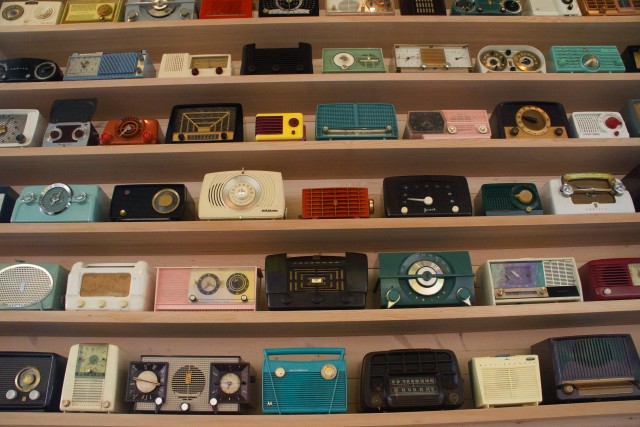Why Radio Won’t Die

This year hasn’t been particularly kind to music fans. In the first four months of 2016, we’ve lost David Bowie, Glenn Frey, Maurice White, Sir George Martin, Keith Emerson and Merle Haggard. When most people think about radio, they immediately think about music. I know I do, but I’m also a serious, lifelong fan of music.
My first memory of radio comes from the early ‘50s; I was at my aunt and uncle’s house when “Goodnight Irene” came on and everyone began to sing along. Time magazine cites the two most played songs in radio history as the Righteous Brothers’ “You’ve Lost That Lovin’ Feelin'” (1964) with more than eight million plays on radio and TV and The Beatles’ “Yesterday” (1965) with at least seven million in the U.S. alone.
Radio, however, is about much more than music. It’s about community and connecting people. Whether sitting around the radio listening to music or the news, or tuning into your favorite station for the morning drive (I’m not talking about podcasts here) ”live linear radio” has been keeping us connected for decades both locally and nationally. There are a reported 15,000 radio stations in the United States, covering more than 40 different formats. Globally, the Central Intelligence Agency keeps a Factbook on the number or radio stations per country, with an interesting mix of private vs. government controlled stations.
Even today, FM radio is still built into our mobile devices. Most people probably don’t know there is a FM radio chip inside their smartphone, but that it’s been turned off for most iOS systems and some Android. (Yes. We will need an antenna, but earbuds could pull double duty here.) This feature is part of the same chip that provides your phone with Wi-Fi and Bluetooth.
You see, radio is all around us. No, literally in waves that scientists began discovering before the turn of the 20th century. And in 1920, those waves were used to broadcast the first radio news program by station 8MK in Detroit, Michigan. Within years, radio grew in extreme popularity to every household, barbershop, restaurant and vehicle. Radio didn’t die with the advent of the TV. (It seems Video didn’t kill the radio star.) It didn’t die with the advent of the Internet. And it won’t die with anything coming in the foreseeable future: There will be virtual-reality radio stations before there aren’t radio stations.
Radio has already had many lives. After the first large fixed devices, it got its second life with transistor or portable radios in the ‘50s. It’s third life came about the same time with radios installed in cars, though it was not taken seriously as an ad medium until several decades later when drive-time auto listening became a major factor. Radio got its fourth and most recent life with satellite and Internet radio. It is expected that as autonomous vehicles take hold, video screens might replace audio inside the cabin. Most of the prototypes developed by the major auto makers show large video screens that pop up where the dashboard used to be. The availability of video, when nobody is driving, will in many cases eliminate the use of audio only. This puts radio on the brink of extinction once again.
Still, there is a possible ray of light for radio usage in the younger generation. All one has to do is walk around a major city and see the high number of ear buds and headphones in use. This is an installed base if I’ve ever seen one. Most are listening to their own playlists either on their phone or through a streaming service. However, Apple Music Radio stations such as Beats 1 LA have shown that there are people who would rather listen to pure “radio” (defined for this case as one to many).
Nielsen reports that 243MM Americans tune in weekly to radio. That’s 91% of Americans 12 and up. Here’s why:
- Some people don’t want to or don’t have time to curate their own playlists.
- People want stuff “live” at the same time others are getting their feed; whether it be music, DJ patter, sports or news, being current is important.
- People aren’t always in a place to watch a screen, and while watching something takes your full attention, listening allows you to multitask.
Will radio be the same as it was in the past? Probably not. But we believe it has at least one more life left. It just needs to be tapped.
Image at top courtesy of Corbis. The opinions and points of view expressed in this commentary are exclusively the views of the author and do not necessarily represent the views of MediaVillage/MyersBizNet management or associated bloggers.


